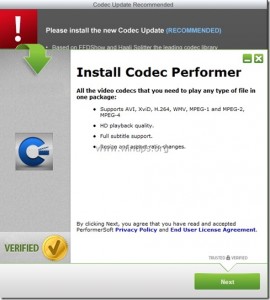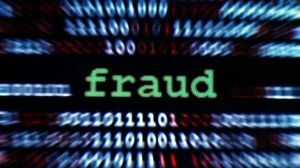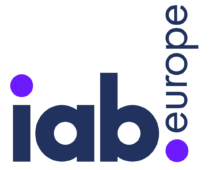Domain Identity Theft Is The Fraudsters’ Latest Ponzi Scheme
by on 20th Oct 2014 in News


Jalal Nasir, Pixalate, CEO, and online fraud expert, shines a light on the latest loopholes exploited by nefarious elements of the digital economy, including naming some of the worst offenders, and urges the media industry at large to better protect itself from the problem.
“Hi, I’m PremiumDomain.com...Would you like to buy some inventory?”
Warning to all advertisers and premium publishers: This is an all-too common call you may be receiving, but don’t believe what you’re hearing is legit!
In a world as unregulated as the online advertising industry, fraud has become the norm. According to the Interactive Advertising Bureau (IAB) nearly 30% of advertising impressions are fraudulent.
Ad fraud is not only rampant, it’s growing and changing rapidly. My company alone has identified more than 80 types of ad fraud, from clicking farms to domain theft.
 The sophisticated fraudsters already employ dozens of techniques, from human impersonation to cookie hijacking.
The sophisticated fraudsters already employ dozens of techniques, from human impersonation to cookie hijacking.
The latest methodology used by these bandits? Masking legitimate domains and stealing the identity of reputable sites like YouTube, eBay and Instagram.
Buying cheap is not necessarily buying smart
Here’s what happens at the scene of the crime: fraudsters offer their own inventory in market disguised as premium publisher inventory causing their inventory supply to inflate artificially, reducing its value in the open market. The victims (the ad buyers) get this inventory for cheap, thinking they’ve scored – yet they lose out in the long term, because fraudulent impressions do not help reach campaign goals.
The crime is exaggerated by the fact that bots learn a bidder’s bidding algorithm using neural networks and then exploit that knowledge by offering fraudulent inventory masked at a reduced cost.
For premium publishers this not only compromises their brand on the open market but also leaves the inventory unsold, since the corresponding demand is met otherwise. The result is a drop in revenue from low fill rate and buyers don’t meet their campaign goals.
Meanwhile, the sellers inventory remains unsold – and both parties blame real-time bidding (RTB) for it. In actuality, it’s the fraudsters using a loop hole to game the system.
The good news is that security companies have zeroed-in on these fraudsters. With new technology and tools, we can reveal the culprits most guilty of using this criminal methodology, as well as its most preyed-upon victims.
No Victim, No Crime? Here's The Top 10 Victims of Ad Fraud
Sizing up our list of victims is troubling on a number of levels. Using our platform, which pulls data from multiple sources across the web, we can reveal the top 10 sites that have fallen victim to domain identity theft. Here is a list of top victims from August:
- youtube.com
- digitaltrends.com
- ebay.com
- thedailybeast.com
- artdaily.com
- msn.com
- gumtree.com
- mysearch.com
- news.bbc.co.uk
- instagram.com
The Big Reveal: Advertising’s Most Wanted
 The top criminal? Tractionize, a site that’s really upped the ante. These guys are inflating impressions five times as much as their closest competition in domain masking. They’ve screwed over big brands, thinking they’re selling ads on YouTube, eBay, Instagram, MSN – the list goes on. With sites as ubiquitous and reputable as YouTube falling victim, it’s tough to imagine the myriad of other sites out there being used and financially abused by the same charlatans.
The top criminal? Tractionize, a site that’s really upped the ante. These guys are inflating impressions five times as much as their closest competition in domain masking. They’ve screwed over big brands, thinking they’re selling ads on YouTube, eBay, Instagram, MSN – the list goes on. With sites as ubiquitous and reputable as YouTube falling victim, it’s tough to imagine the myriad of other sites out there being used and financially abused by the same charlatans.
This is a silent crime – one that has possibly gone unnoticed by many marketers. We’re here to make sure that doesn’t happen.
Based on our tools and technology, here’s who we’re seeing as the top 10 offenders:
- tractionize.com
- adbito.ml
- imp-serving.com
- nxisrv.com
- czmvcra.tk
- lightquartrate.com
- tmnpartners.com
- espnplus.ga
- infoseekerapp.com
- incmd06.com
Advertisers and publishers alike can protect their inventory from these outlaws. But it takes a village. We need the media industry at large to join together to help combat the growing ad fraud epidemic.
The IAB in the US says it plans to help stamp out the online ad industry’s fraud problem by launching a cross-industry accountability programme. It’s even released a set of “anti-fraud principles” that will form the backbone of this initiative. They get it. This is a fantastic step in the right direction – and hats off to the IAB for recognising the significance of this problem.
But while this no doubt marks a commendable effort by the ad industry to begin cleaning up online ad inventory, it’s time to take it a step further – unmasking these criminal sites. For US companies losing millions in fraudulent ad buys a year, merely acknowledging the problem and promising to do something won’t get their money back.
 Using new analytics platforms, the industry is in a good position to bring these thieves to justice. Powerful analytics can help reputable sites understand what’s really going on, and can get to the bottom of who’s stealing from them and ultimately help improve their online advertising spend with granularity and accuracy.
Using new analytics platforms, the industry is in a good position to bring these thieves to justice. Powerful analytics can help reputable sites understand what’s really going on, and can get to the bottom of who’s stealing from them and ultimately help improve their online advertising spend with granularity and accuracy.
The reality is that ad fraud is illegal, it’s just very difficult to regulate. What marketers need isn’t more regulation, but recourse – a plan of attack for bringing those culpable of ad fraud to justice. Knowledge is power, and we in the media industry need to be armed with as much knowledge as possible to avoid being taken for fools.
Ad FraudAd VerificationAdvertiserAnalyticsattributionDigital MarketingDisplayExchangeMartechMedia SpendTargetingTradingViewability








Follow ExchangeWire